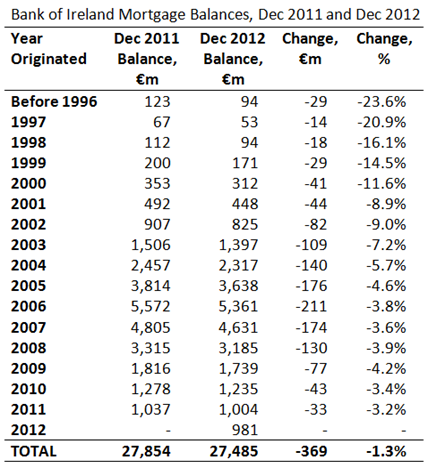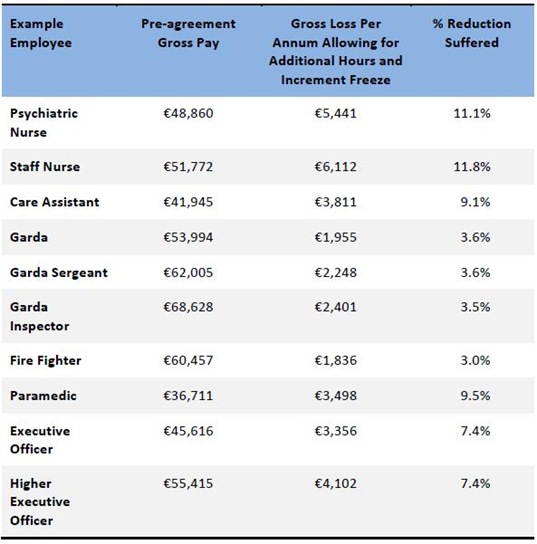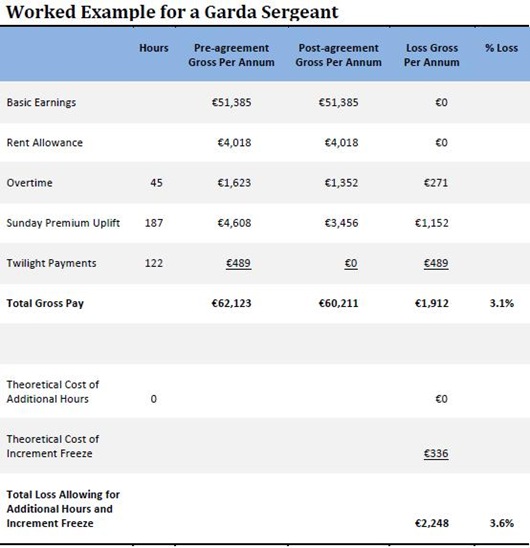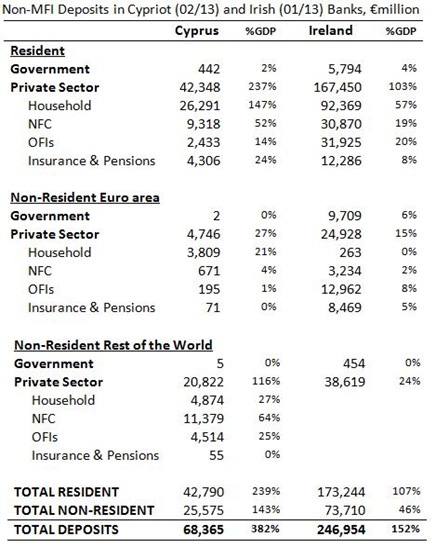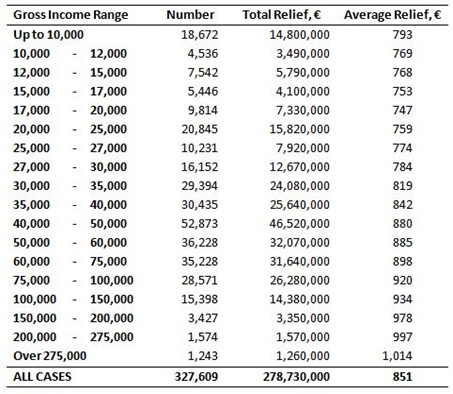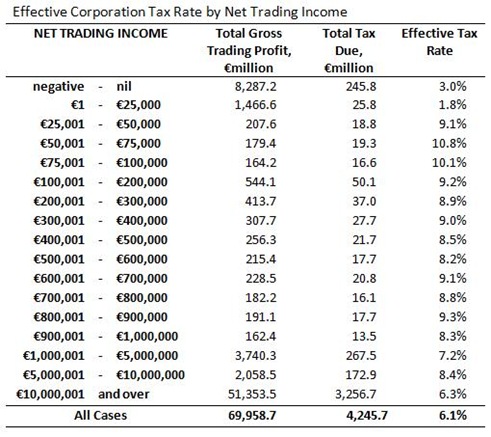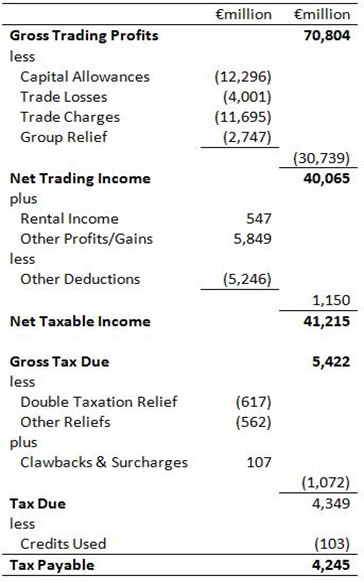Although it was still came as a surprise when announced the possibility of a depositor contribution to the Cypriot rescue has been in the offing for some time. The €16 billion rescue programme for Cyprus is in some ways similar to the Irish programme. Ireland is in an €85 billion programme (55% of GDP), but €17.5 billion came from our own resources. Cyprus is considering entering a €16 billion programme (90% of GDP), but must find €6 billion from its own resources.
Ireland used the National Pension Reserve Fund (NPRF) for our contribution. Cyprus has no such sovereign wealth fund and has to look elsewhere to find the €6 billion. The €6 billion could have been found through a long-term, low-interest loan from the the ESM which could be serviced, and possibly repaid, through increased taxes in the future.
Instead the proposed approach is for a “once-off” levy on all bank deposits in Cyprus to raise the €6 billion now. The proposed tax is set at:
- 6.75% of all bank deposits up to €100,000, and
- 9.9% of all bank deposits in excess of €100,000
But these are still subject to change. The proposal raises a number of questions. Here is a set of ten.
- Why is it called a tax?
- Why does it apply equally to all banks?
- Why does it apply to all customer deposits?
- Why does it apply to deposits below €100,000
- Why are all deposits above zero subject to the cut?
- What about inter-bank deposits?
- Will it be applied per account or per depositor?
- What about the bondholders?
- What about the Russians?
- Is it a good measure?
Some brief discussion of these is below the fold.
1. Why is it called a tax?
Technically it is called “an upfront one-off stability levy” on deposits but it is not a tax or “fiscal measure” as claimed by Olli Rehn. The revenue does not accrue to the Cypriot government. It is a type of debt-for-equity swap. The banks will swap the appropriated value from each depositor for an equivalent value of shares in the banks. So, someone with €10,000 on deposit on Friday will have €9,325 in their account on Tuesday (or Wednesday or Thursday or whenever) and will be given €675 of worth of shares in the bank. Existing shareholders will see their much-devalued holdings diluted and it is very unlikely that the new shares will maintain their starting nominal value, but there is some talk of linking the swap to future revenues from natural resources (or something).
2. Why does it apply equally to all banks?
Just like Ireland, Cyprus has a set of banks some of whom have made big losses and others who have made more moderate losses. The Irish banks lost money by getting deposits from abroad and lending them out to people (concentrated in the real estate and construction sectors) who could not repay it. The Cypriot banks lost money by accepting deposits and using some of the them to buy around €15 billion of Greek government bonds. When the EU mandated that Greece had to default on its sovereign bonds some Cypriot banks endured significant losses. The tax applies to all deposit instruments held in Cyprus so includes banks which incurred these losses and those that didn’t.
3. Why does it apply to all customer deposits?
The tax applies to demand accounts, notice accounts and current accounts. Timing means that someone paid monthly who received their salary into the bank account last Thursday or Friday will lose around 1/15th of this month’s pay under the current proposals, whereas someone paid early next week will get their full salary.
4. Why does it apply to deposits below €100,000?
Cyprus has a €100,000 Deposit Protection Scheme. The DPS “is activated in the event a decision is reached that a member bank is unable to repay its deposits”. However, none of the Cypriot banks are saying they are unable to repay their deposits (yet). This is not a failure by the banks to repay deposits, it is mandated reduction in deposits by the government. [Can all deposit guarantee schemes be circumvented in this way? It would seem so.] Of all the customer deposits in Cypriot banks it is estimated that €30 billion are covered by the DPS.
5. Why are all deposits above zero subject to the tax?
A lower cut-off of even €20,000 would likely remove huge numbers of people from being subject to this tax without significantly reducing the amount of money to be raised by it. A deposit of €20,000 implies a tax liability of €1,350. The reduction from such a move would probably be less than 10% of the total expected to be raised by the levy.
6. What about interbank deposits?
Almost all the attention has been on the €68 billion of retail deposits held by banks in Cyprus, but these banks also had €24 billion of deposits from monetary financial institutions (MFIs). These inter-bank deposits will not be subject to the deposit levy. There is also liquidity from the ECB and ELA from the Central Bank of Cyprus. The monthly balance sheet of the central bank suggests that around €9 billion of ELA has already been forwarded to Cypriot banks.
7. Will it be applied per depositor or per account?
A depositor with €200,000 in one account will be faced with a €16,650 reduction in their balance whereas someone with 4 x €50,000 deposits could see €13,500 lifted from their accounts if done on a per-account basis. Will the banks/government know how much a person has on deposit across all the banks?
8. What about the bondholders?
For a start there are very few bonds issued by the Cypriot banks. At the end of February the total was €1.7 billion (compared to €68 billion for customer deposits). The Eurogroup statement includes a reference to a “a bail-in of junior bondholders” but it is not clear how much that will generate. There is close to no senior unsecured bonds in the Cypriot banking system. Any claims that depositors are being sliced to save bondholders is well wide of the mark. There are no bondholders to save so such an argument is a red herring.
9. What about the Russians?
There are lots of claims that one of the reasons for the depositor bail-in is to target Russian money that has fled to Cyprus. I think this is confusing stocks and flows. There is some Russian money in Cyprus but the flow of money in and out is much much greater. Money that was on deposit in Cypriot banks last Friday will be subject to the levy but the vast amount of money that has moved in and out over the past few years is unencumbered by this. The move will probably significantly reduce the flow of Russian funds through Cyprus.
10. Is it a good measure?
In theory, any step in the direction of having the creditors of a bank carry the consequences for losses in excess of the capital of that bank is to be welcomed. If depositors give money to a bank and that bank loses it (for whatever reason) then it should be the depositors who bear the losses. In theory of course.
The issue is muddied when we try to distinguish between “big” depositors who can afford to know better and “small” depositors who are simply not in a position to examine the finer details of a bank’s balance sheet (even if that was a reliable statement of the riskiness of a bank’s position). Bondholders should evaluate such risks but they are absent in this case.
Much as it may be to the chagrin of many people banks are different, and instances where providing public support to ailing banks are not difficult to comprehend. This was not deemed possible in Cyprus because of the initial level of government debt (70% of GDP at end 2011) and the decision to focus on the bank’s creditors followed that. [Aside: What would have happened if Ireland’s government debt was 70% of GDP in 2007 rather than 25%?]
This step will have a negative impact on the Eurozone’s banking system. The scale and scope of this will only emerge over the coming weeks and months. It may be limited to Cyprus, or it may not. It is possible that this move will have a positive impact on the Eurozone’s sovereign bond markets. In countries with (f)ailing banks there is now the precedent that creditors of the banks will carry the burden rather than sovereign bondholders. This precedent may not be repeated and the contents of the Eurozone’s playbook are as difficult to predict as ever.
So, yes continue with this deposit haircut but introduce a lower limit of €20,000 per person to exclude working balances in personal current accounts and “small” depositors. Cyprus will have to put together a plan to significantly downsize its banking sector. The ECB will have to provide significant amounts of liquidity to cover the deposit flight. Ireland and the ECB did so in 2010 and we have slowly pulled back from the abyss. But wouldn’t it have been better if the Anglo depositors had carried the can?
